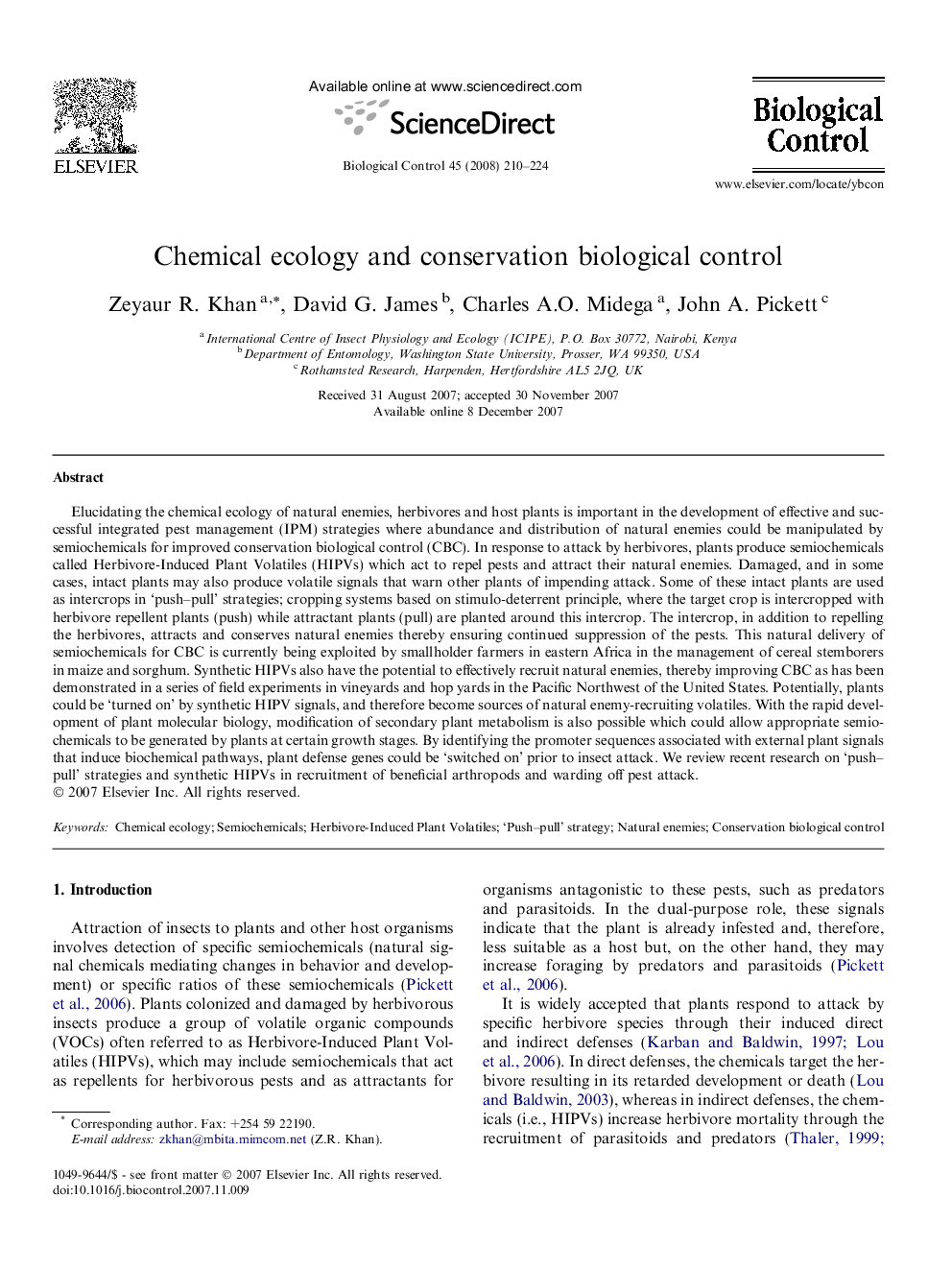| کد مقاله | کد نشریه | سال انتشار | مقاله انگلیسی | نسخه تمام متن |
|---|---|---|---|---|
| 4505123 | 1321128 | 2008 | 15 صفحه PDF | دانلود رایگان |

Elucidating the chemical ecology of natural enemies, herbivores and host plants is important in the development of effective and successful integrated pest management (IPM) strategies where abundance and distribution of natural enemies could be manipulated by semiochemicals for improved conservation biological control (CBC). In response to attack by herbivores, plants produce semiochemicals called Herbivore-Induced Plant Volatiles (HIPVs) which act to repel pests and attract their natural enemies. Damaged, and in some cases, intact plants may also produce volatile signals that warn other plants of impending attack. Some of these intact plants are used as intercrops in ‘push–pull’ strategies; cropping systems based on stimulo-deterrent principle, where the target crop is intercropped with herbivore repellent plants (push) while attractant plants (pull) are planted around this intercrop. The intercrop, in addition to repelling the herbivores, attracts and conserves natural enemies thereby ensuring continued suppression of the pests. This natural delivery of semiochemicals for CBC is currently being exploited by smallholder farmers in eastern Africa in the management of cereal stemborers in maize and sorghum. Synthetic HIPVs also have the potential to effectively recruit natural enemies, thereby improving CBC as has been demonstrated in a series of field experiments in vineyards and hop yards in the Pacific Northwest of the United States. Potentially, plants could be ‘turned on’ by synthetic HIPV signals, and therefore become sources of natural enemy-recruiting volatiles. With the rapid development of plant molecular biology, modification of secondary plant metabolism is also possible which could allow appropriate semiochemicals to be generated by plants at certain growth stages. By identifying the promoter sequences associated with external plant signals that induce biochemical pathways, plant defense genes could be ‘switched on’ prior to insect attack. We review recent research on ‘push–pull’ strategies and synthetic HIPVs in recruitment of beneficial arthropods and warding off pest attack.
Journal: Biological Control - Volume 45, Issue 2, May 2008, Pages 210–224